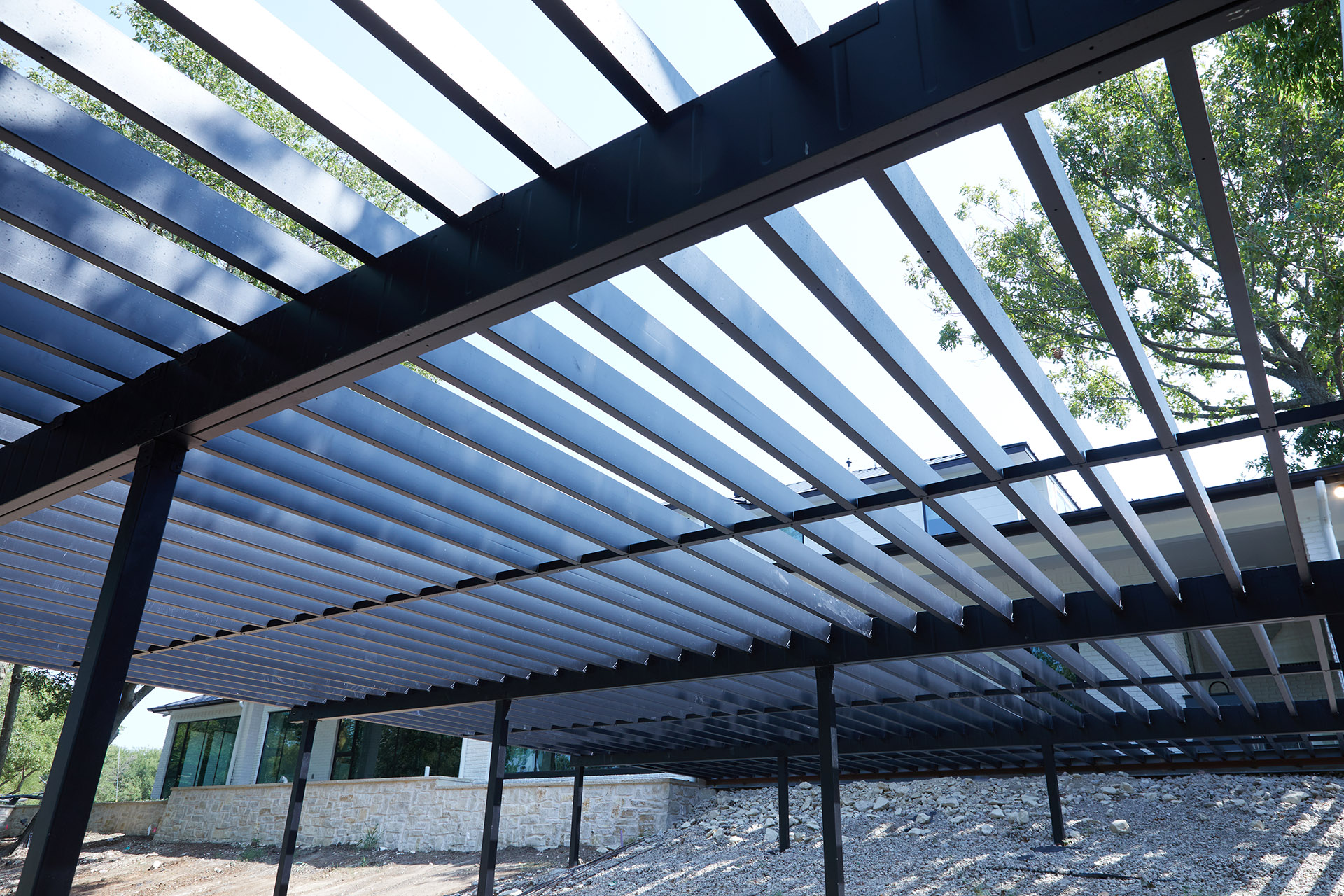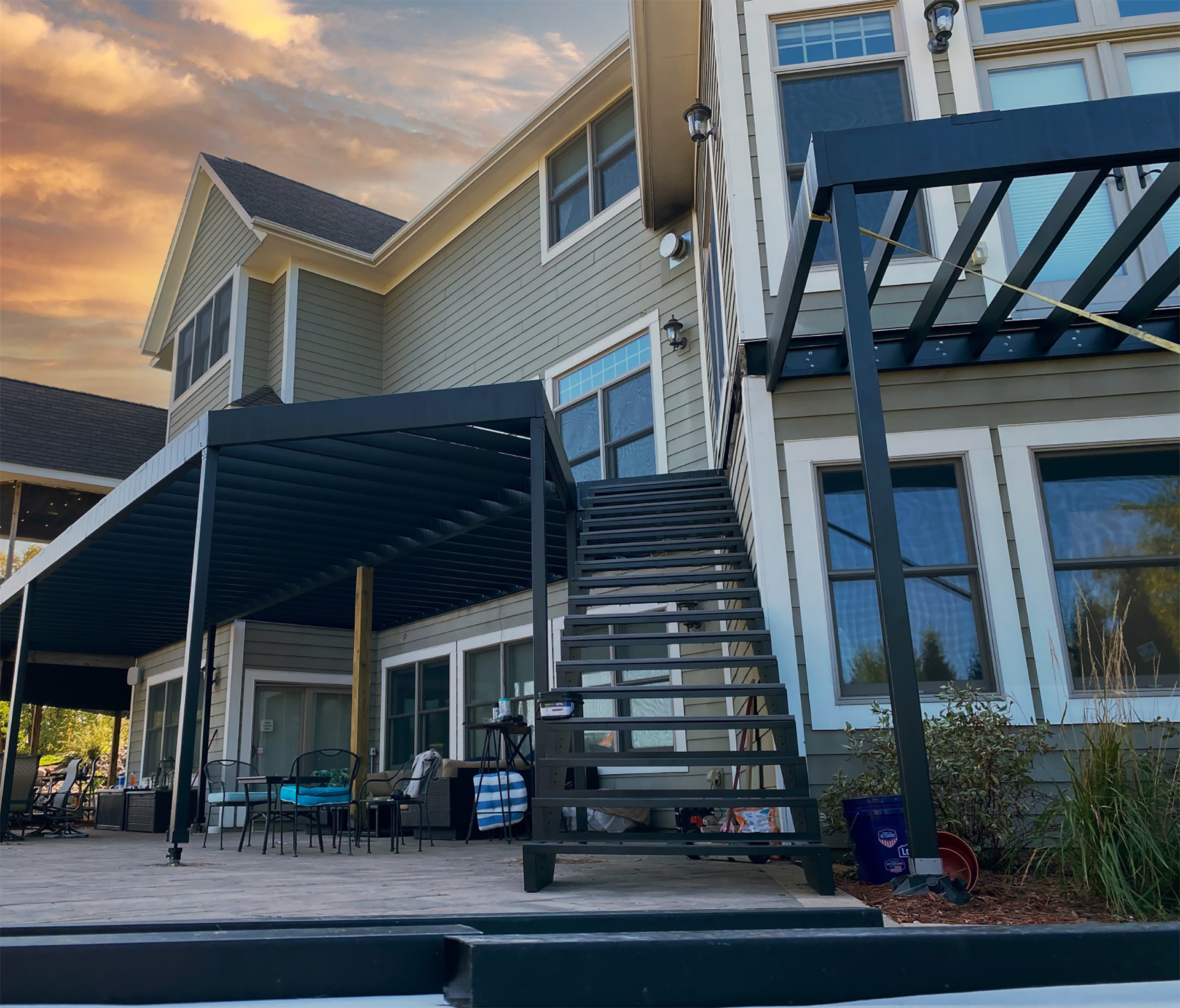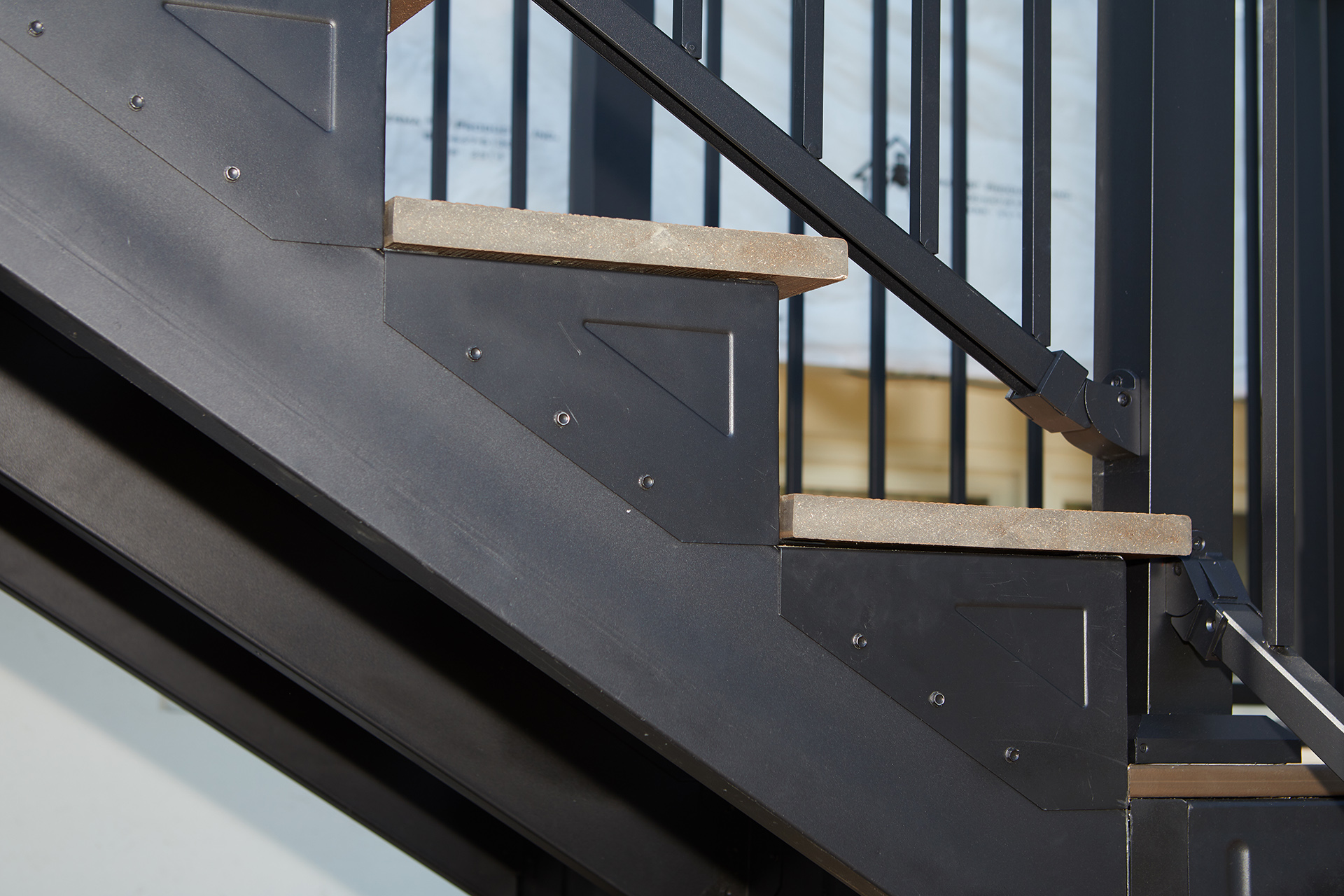╳

Get The Latest On Our Greatest
Subscribe to Our Company/Product Updates

Wednesday, February 7, 2024
When it comes to building a lasting deck structure, what is beneath the surface boards is just as important—if not more important—as what is resting on top. That’s why when it comes to the deck’s substructure, many contractors and DIY homeowners alike are making the switch from wood to steel. A strong and stable deck framing material, steel makes it possible to build a structurally sound deck that can support today’s most in-demand outdoor amenities.
But have you considered that the benefits of steel framing can extend to the deck stairs? With steel stair framing, contractors can rest easy at night knowing that their customers are safe while they’re spending time on their new deck and navigating the deck stairs.
Steel framing resists the damaging effects of weathering
One of the many benefits of steel stair framing is its ability to resist the damaging effects of severe weathering. Steel is inherently resistant to most tangible threats, making it possible to sideline issues that wreak havoc on wood frame deck stairs, such as deterioration after long-term exposure to moisture, splitting under hurricane-force winds and warping as a result of extreme heat or rapid freeze-thaw cycles. In application, the steel stairs will lay flat and stay flat underneath a customer’s feet.
Steel is also a noncombustible building material, which means that it can help contractors complete fire-safe projects in regions that are prone to wildfires or densely populated urban areas where fires can spread rapidly. A fire-hardened option, framing deck stairs with steel can help prevent a ground fire from spreading quickly, reducing the vulnerability of a customer’s home and any surrounding structures.


Comprehensive steel stair systems are at the center of structurally sound builds
To construct deck stairs from wood, contractors would need to use multiple tools, templates and calculations to ensure deck stairs are useable and within recommended dimensions. But a ready-to-assemble steel stair framing system supports a straightforward stair building process. Incorporating a comprehensive steel stair system into a deck build also sidelines serious safety concerns, like poor stringer-to-deck connections and inconsistent rises and runs. These challenges are common in traditional wood decks, as conventional stair construction requires contractors cut pieces of lumber by hand—a recipe for miscalculations. On the other hand, engineered stair systems from select manufacturers have fixed and adjustable stair brackets that can accommodate various rise and run options. Stringer and stair trays already include blocking every 10 inches on center for railing post attachment and stair tread attachment. Self-drilling screws ensure maximum strength and security at connections.
What’s more, steel stair systems can be used with any type of deck surface board, including composite, PVC, aluminum, tile, wood or tropical hardwoods. This makes it possible to bring design continuity to an outdoor space without compromising the structural soundness of the deck structure.


Getting started on the right foot
Before getting started on the stair installation process, contractors can use Fortress Building Products’ free stair calculator. After entering a few parameters, the calculator will walk contractors through all the steps required to assemble a stair stinger using a steel stair system. Contractors can also explore Fortress Building Products’ YouTube channel for step-by-step installation videos not only for our steel stair system but also for the compatible Evolution steel deck framing system.
Search